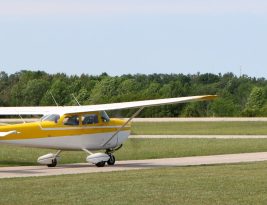What could be better than taking your significant other on a romantic sunset flight around your local airport? I’ll tell you what, taking your significant other on a romantic sunset flight during an absolutely epic sunset! Sounds awesome right, but just how are you suppose to know when an epic
…Category: Weather
View All CategoriesToday we will take Monday’s post on temperature inversions a step further with a discussion on atmospheric stability and the types of weather we can expect with a stable and unstable air mass.
Atmospheric stability is defined as the resistance of the atmosphere to vertical motion.
…Today’s post on temperature inversions comes to us from The Pilot’s Manual: Ground School (PM-2).
Temperature normally decreases with altitude. In the standard atmosphere the temperature is assumed to decrease by approximately 1.98°C for each 1,000 feet climbed in a stationary air mass. In practice,
…An important aspect of becoming a private pilot is having an understanding of weather. Even more important is having a thorough understanding of weather that could pose a potential risk to flight. The goal of this understanding is so you can identify and avoid these hazardous conditions as part of
…Icing, reduced visibility from fog or particulates, turbulence, windshear, thunderstorms, and microbursts are all types of weather that pose significant operational challenges. We’ve already discussed the weather theory behind thunderstorms and other related weather events, so today we’ll focus on the things to keep in mind should you ever find
…It’s been cold here in Seattle and across many parts of the country over the last several days. All week long I have had the pleasure of scraping an inch of ice and frost off my windshield each morning. If my car’s windshield is icing over, the same can probably
…The Federal Aviation Administration (FAA) has recently released a new training aid, Ice Induced Stall Pilot Training. This 30-minute video covers the phenomenon of tailplane and wing stall icing conditions as well as icing certification rules and recommended cockpit procedures to mitigate ice induced stalls. As a
…[Update: In December 2022, the FAA published the Aviation Weather Handbook (FAA-H-8083-28) which replaced Advisory Circulars 00-6, 00-45 and 00-54.]
Adverse wind is a category of hazardous weather that is responsible for many weather-related accidents. Adverse winds include: crosswinds, gusts, tailwind, variable wind, and a
…

